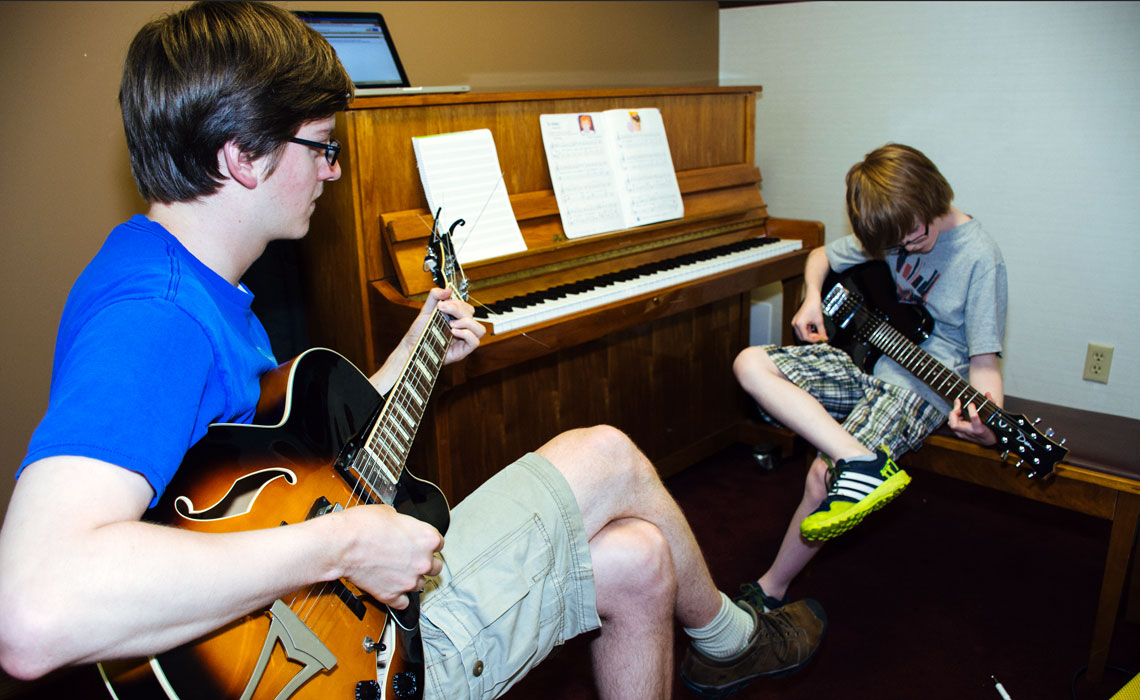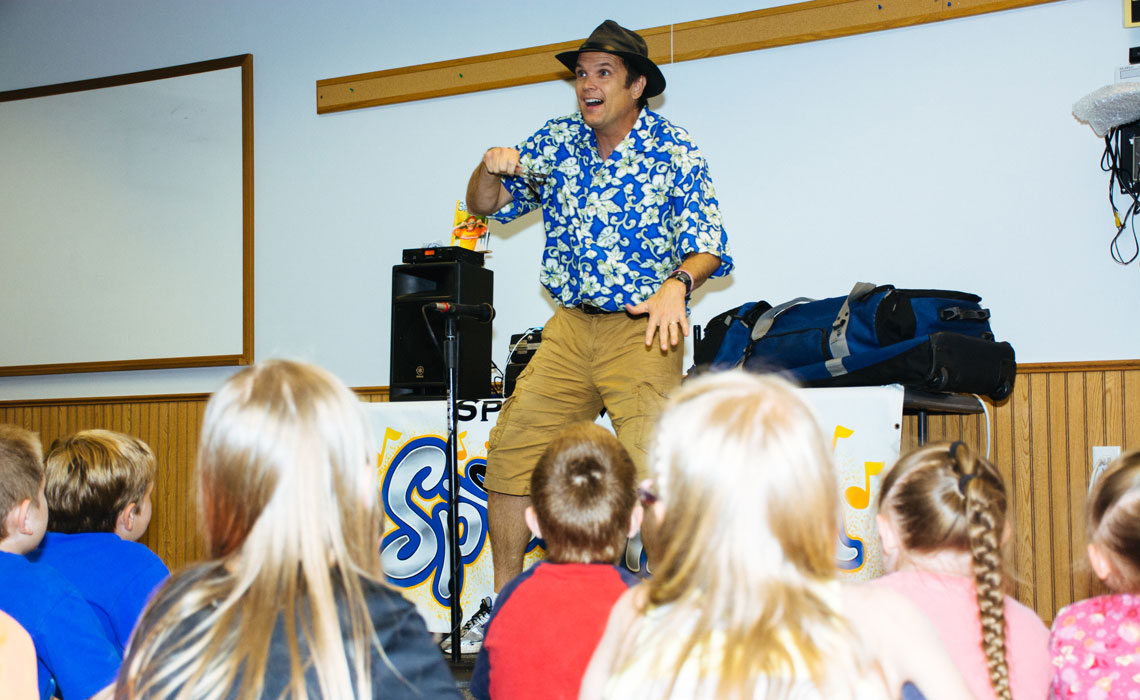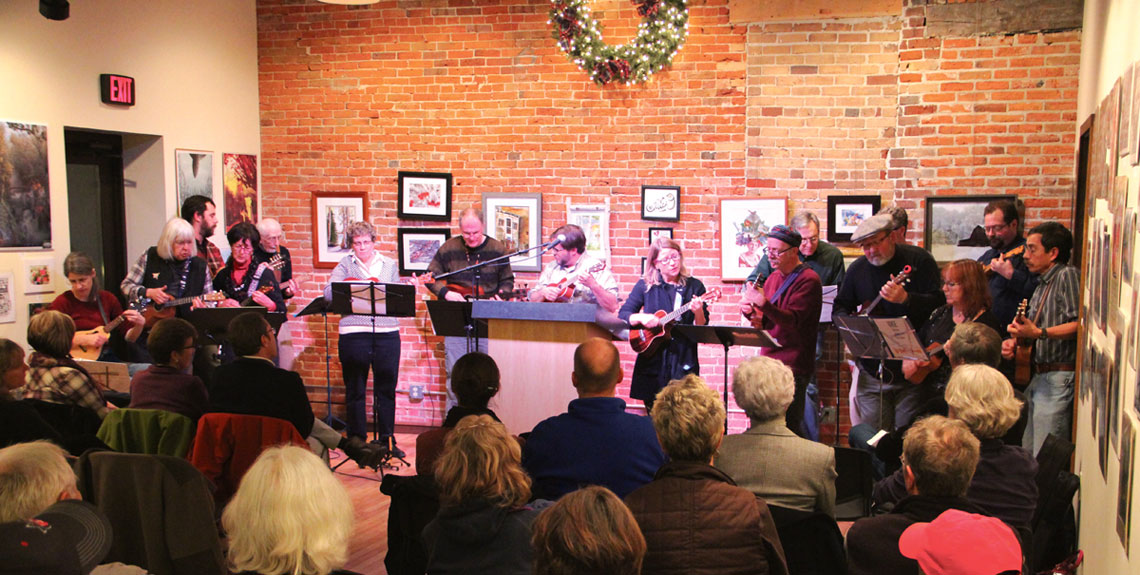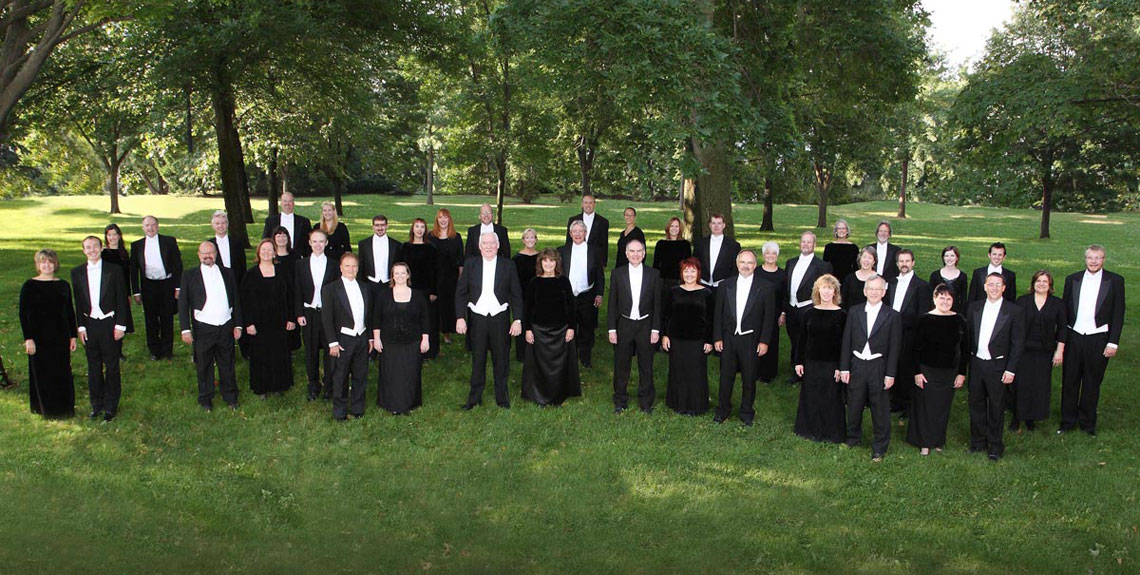1 Where the Music Starts
talented teachers, wide participation foster a quality music education system in the valley
by Eric Rasmussen / photos by Kelsey Smith
The Chippewa Valley has a rich musical history, with a lot of people in place who are working harder than ever to maintain those traditions.
Understanding a music education system that has produced locally and nationally notable musicians for decades, that encompasses public schools, private instruction, and nonprofit organizations, and that enjoys broad community support is an incredibly complicated task. Identifying what elements established the quality of music education in the Chippewa Valley might be all but impossible. So is predicting the effects of emaciated public school budgets versus increased civic engagement in music.
Or maybe it’s not.
Maybe it all comes back to one guy, Donald “Sarge” Boyd, who directed the Eau Claire High School band from 1929 to 1963, and who took over the Eau Claire municipal band in 1934. According to local lore, he carried a yardstick during marching band practice, and whoever fell out of step received a sharp swat to the back of the knees. Maybe a legendary educator who was committed to excellence in his students created a whole generation of high-quality musicians, which taught the next generation, and which developed a reputation that attracted other gifted educators.
Giving Sarge credit for the entire music education system oversimplifies history and ignores a lengthy list of educators and musicians who have established Eau Claire’s stature as a destination for music instructors and students. But Sarge is at the center of a theme that describes the training of young musicians in this area better than any other. As stated by Eric Dasher, current director of Memorial High School’s band program and the Chippewa Valley Youth Symphony, “Success breeds success.” And it has been in the Chippewa Valley for generations.
One measure of that success is participation in our music education programs. According to Dasher, “When I went to the Macy’s Parade, all the chaperones were band directors, and the biggest question from everybody was ‘How big is your program?’ Most of the answers were from 150 to 225. When I said I have 330 kids, with another 120 in jazz, their jaws dropped. The participation here is huge.” Rae Schilling, one of the owners of the Eau Claire Music School, agrees. “There is a higher demand for music lessons here than in other similarly sized communities,” Schilling says. “Our enrollment has doubled since ECMS started and is poised to double again.” While that level of interest is nice, it wouldn’t be notable if it didn’t crescendo into some level of achievement. Our students have that covered, too. UW-Eau Claire’s jazz program is often awarded and widely renowned for its quality, the bands at North and Memorial high schools frequently win national honors, and individual students regularly earn scholarships and other recognitions for their musical talents. While plaques and certificates are nice – and trips to New York for the Essentially Ellington festival or the Macy’s Thanksgiving Day Parade are even nicer – Dennis Luginbill, DeLong Middle School band director and longtime participant in Eau Claire music education, cites a measure of success that is simpler and perhaps more profound than anything else: Our community values our student musicians. “Just look at the visibility of our bands, like at the Memorial Day Parade,” he says. “It’s important to have events like that, that make students’ music experience in school meaningful.”
Even if Chippewa Valley musicians and fans are enjoying the output of some complex and inexplicable feedback loop, identifying the contributing factors is critical to maintaining that cycle for the future. The first factor is the simplest, according to Shawn Smets, former director of the Eau Claire Music School: “Parental involvement is highly influential in promoting student success, and I don’t see any changes coming in that proven truth of parenting.” The next major factor is the community. “Think of all the places you can go to see music: Acoustic Café, Phoenix Park, Owen Park, Stone’s Throw, the Children’s Theatre,” says Dasher. Then, young students need role models, and we now have plenty of locals and former locals making livings from music. Also, as Luginbill points out, several environmental and cultural factors also make big contributions. “The weather can be a unifying factor,” he says, “and there’s a work ethic, a sense of delayed gratification, that’s still in place.”
The Chippewa Valley would be a very different place, at least musically, without any of these elements, but there is consensus that one factor is the most important. As Smets puts it, “Integral to this system and its success is that here in the Chippewa Valley it has been our privilege to enjoy a considerable number of deeply committed, highly gifted music educators.” The names come quickly off the tongues of anyone discussing music education in the area, and they are referred to like old friends. “Sarge” Boyd, Marv Kuehn, John Mills, Howard Lehman, Bruce Herring, Steve Wells, Peter Haberman, Bob Baca, Nobuyoshi Yasuda, Ivar Lunde Jr., and many more are all musicians, directors, and educators who have worked with thousands of students apiece and have built a reputable music education system in Eau Claire, lesson by lesson, period by period, and performance by performance.
This biggest piece of the puzzle is also the one most in jeopardy: State politics has local ramifications, one of which is that Wisconsin is having a harder time retaining talent. Luginbill explains: “The problem with the university in town is that they don’t pay very competitively. The jobs are attracting fewer applicants.” The Chippewa Valley has a rich musical history, with a lot of people in place who are working harder than ever to maintain those traditions. But, Dasher states, “I’ve never been more worried about it all. We’re hitting a point very soon where we have to start cutting bands. Then all of a sudden everything is in danger. Then it’s not inclusive any more.”
For now, though, Eau Claire is still a destination for music, music students, and music educators. Many bright spots remain. Susan Ayres, elementary curriculum coordinator for the Eau Claire Area School District, points out that elementary schools in Eau Claire recently eliminated traveling positions, so each school has its own music teacher and more students are spending more time in music class. Schilling of the Eau Claire Music School says, “We think that the current momentum will continue, especially with the cross-fertilization between the schools, university, Volume One, the growing number of summer music festivals, and local business community.” The lesson rooms are packed, and the school bands are full. If all those kids keep practicing, the success will continue.
